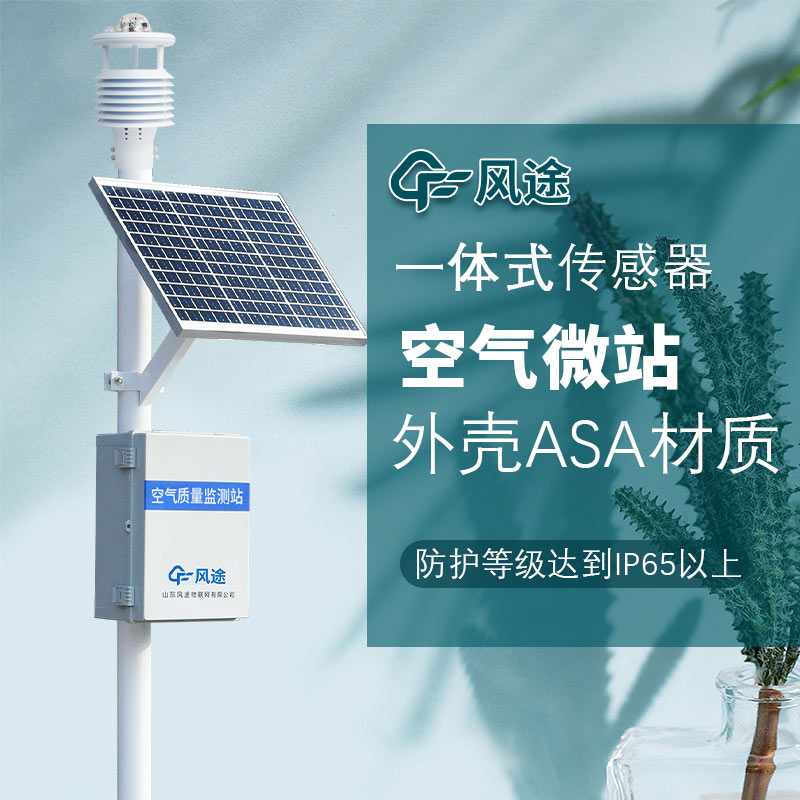Shandong Fengtu IOT Technology Co., Ltd
Sales Manager:Ms. Emily Wang
Cel,Whatsapp,Wechat:+86 15898932201
Email:info@fengtutec.com
Add:No. 155 Optoelectronic Industry Accelerator, Gaoxin District, Weifang, Shandong, China

Sales Manager:Ms. Emily Wang
Cel,Whatsapp,Wechat:+86 15898932201
Email:info@fengtutec.com
Add:No. 155 Optoelectronic Industry Accelerator, Gaoxin District, Weifang, Shandong, China
time:2025-04-18 09:46:45 source:Weather Station viewed:557 time
Although the Air quality monitoring station is a fixed facility, its greatest advantage lies in its ability to achieve a high-density and refined regional monitoring layout.
There are a limited number of large-scale air quality monitoring stations, and they are sparsely distributed. They can often only provide an overview of the air quality in a large area, making it difficult to accurately capture the differences in air quality among different micro-environments within the city. The Air quality monitoring station, on the other hand, can be flexibly deployed in every corner of the city, forming a dense monitoring network. For example, in the central area of the city, where there are numerous office buildings and heavy traffic, a large amount of pollutants are emitted from vehicle exhaust and human activities. By setting up small monitoring stations at multiple intersections, streets, and around commercial areas, the real-time concentration changes of pollutants in this area can be accurately monitored. In residential communities, small monitoring stations can be located close to residential buildings, near people's daily living spaces, to monitor the air quality that residents breathe daily, providing them with air quality data that is more relevant to their actual living environment.
In industrial areas, the advantage of the refined layout of the Air quality monitoring station is even more prominent. The pollution situations in different directions and at different distances around factories may vary greatly. By reasonably distributing small monitoring stations upwind, downwind of the factories, and near different workshops, the diffusion patterns and impact scopes of pollutants emitted by the factories can be comprehensively understood, providing a powerful basis for environmental protection departments to precisely supervise industrial pollution.
This high-density and refined layout of the Air quality monitoring station fills the monitoring blind spots of large-scale monitoring stations and provides more comprehensive and detailed air quality data. These abundant data help environmental researchers conduct in-depth analysis of the temporal and spatial variation characteristics of urban air quality, and assist urban managers in formulating more targeted air pollution prevention and control strategies, so as to more effectively improve the overall air quality of the city and safeguard the health of residents.

When the components in the air such as sulfur dioxide, nitrogen oxides, carbon monoxide, and hydrocarbon compounds exceed the standards, pollution follows. Sulfur dioxide mostly comes from the combustion of industrial fuels, and factory chimneys often emit large amounts of exhaust gases. Nitrogen ox...
what does rain gauge measure is a meteorological instrument that measures the amount of precipitation per unit area in a given time, and can record the change of rainfall over time....
The COD Analyzer is an instrument used to monitor the Chemical Oxygen Demand (COD) in water bodies. It plays an extremely important role in fields such as environmental protection, water resource management, and industrial wastewater treatment. COD is a key indicator for measuring reducing substance...
description of a rain gauge is an instrument used by meteorologists and hydrologists to collect and measure the amount of liquid precipitation in a predetermined area, capable of measuring rainfall over a period of time....